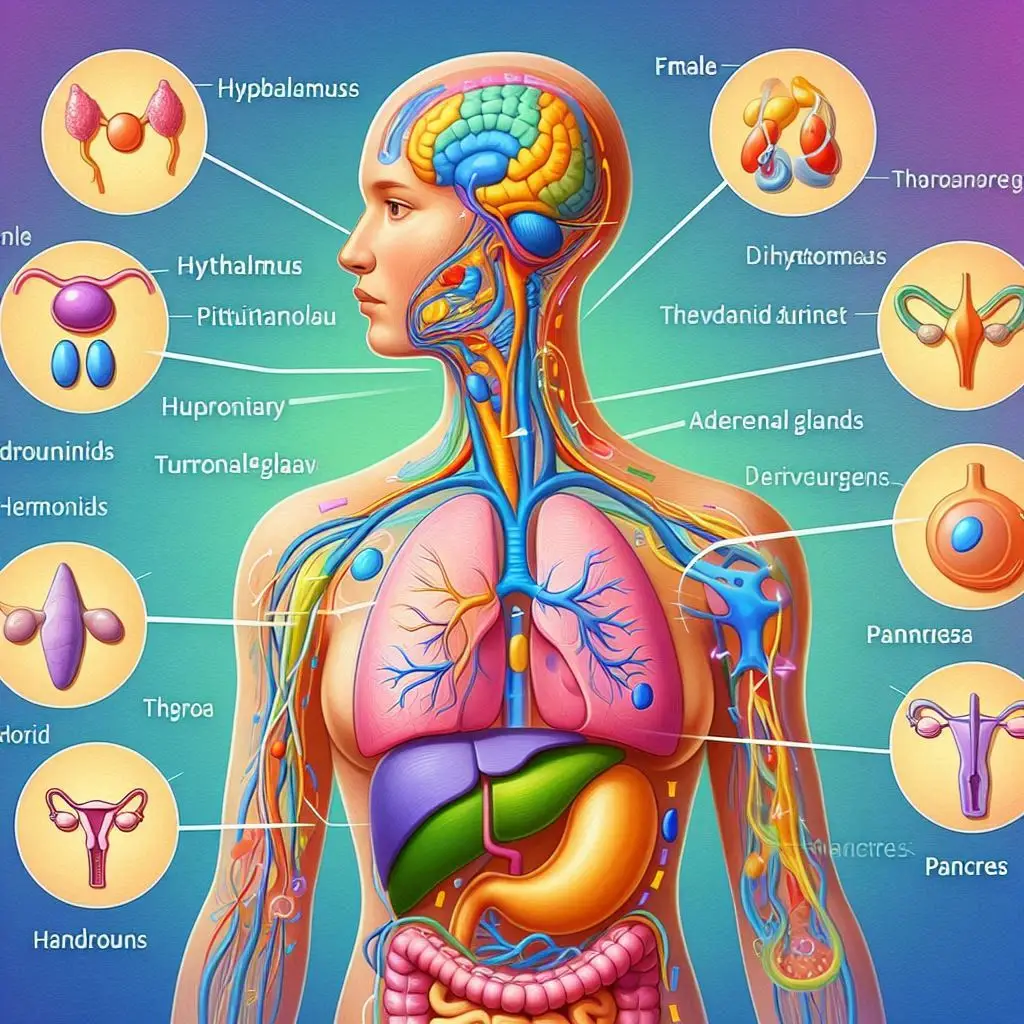Hormonal receptors classification and function

Hormones are chemical messengers that regulate various physiological processes in the body. They exert their effects by binding to specific proteins called hormone receptors. Understanding the classification, function, and mechanisms of hormone receptors is crucial for comprehending the endocrine system and its role in maintaining homeostasis.
Classification of Hormone Receptors
Hormone receptors fall into two main categories based on their location and the type of hormones they interact with.
Cell Surface Receptors
Cell surface receptors reside in the plasma membrane of target cells. These receptors primarily interact with water-soluble hormones, such as peptide hormones and catecholamines. Two main types exist:
- G Protein-Coupled Receptors (GPCRs): GPCRs form the largest family of cell surface receptors. They consist of seven transmembrane helices and detect extracellular signals. When activated, they initiate intracellular signaling pathways, often involving second messengers like cyclic AMP (cAMP) and inositol trisphosphate (IP3).
- Enzyme-Linked Receptors: These receptors have both receptor and catalytic functions. When hormones bind to them, they trigger enzymatic reactions inside the cell. A common example is receptor tyrosine kinase.
Intracellular Receptors
Intracellular receptors are located within the cytoplasm or nucleus of target cells. They typically bind to lipid-soluble hormones, such as steroid hormones and thyroid hormones. This class includes:
- Nuclear Receptors: These receptors bind to hormones that can diffuse through the cell membrane. Examples include glucocorticoids, estrogens, and androgens. After binding, they move to the nucleus and influence gene expression by interacting with specific DNA sequences.
Functions of Hormone Receptors
Hormone receptors play vital roles in mediating hormonal effects through several mechanisms:
- Gene Regulation: Intracellular receptors often act as transcription factors. When hormones bind, they regulate gene expression, leading to long-term changes in cell function.
- Signal Transduction: Cell surface receptors initiate signaling cascades that alter cellular activities. For instance, GPCRs activate G proteins, stimulating or inhibiting various intracellular pathways. This process leads to rapid cellular responses.
- Physiological Responses: Hormone receptors participate in numerous physiological processes. For example, androgen receptors are crucial for male reproductive development, while glucocorticoid receptors play a role in stress responses and metabolism.
Mechanism of Hormone Action
The interaction between a hormone and its receptor marks the first step in the hormone action mechanism. This binding triggers a series of events that lead to the desired physiological response in the target cell.
- Hormone-Receptor Binding: The hormone binds to its corresponding receptor, forming a hormone-receptor complex. This interaction’s specificity depends on the complementary structures of the hormone and the receptor.
- Conformational Changes: The binding of the hormone induces changes in the receptor’s shape, which is necessary for the subsequent steps in the signaling pathway.
- Signal Transduction: In cell surface receptors, the conformational changes activate intracellular signaling cascades. These often involve second messengers like cAMP or IP3, leading to the desired cellular response.
- Gene Regulation: For intracellular receptors, the hormone-receptor complex moves to the nucleus. It binds to specific DNA sequences called hormone response elements (HREs). This binding regulates the transcription of target genes, resulting in changes in protein synthesis and cellular function.
Regulation of Hormone Receptors
Regulating hormone receptors is essential for maintaining homeostasis and ensuring appropriate responses to hormonal stimuli. Several mechanisms control hormone receptors:
- Receptor Synthesis: Cells can up- or down-regulate hormone receptor gene expression. This process changes the number of receptors on the target cell’s surface or within the cell.
- Receptor Internalization: After hormone binding, some cell surface receptors can be internalized. This process reduces the number of available receptors for further signaling.
- Receptor Desensitization: Prolonged exposure to a hormone can lead to receptor desensitization. In this case, the receptor becomes less responsive to the hormone, often due to phosphorylation.
- Receptor Degradation: Hormone receptors can undergo degradation through the proteasome or other cellular mechanisms. This process reduces the number of functional receptors.
Hormone Receptor Disorders
Alterations in hormone receptor structure or function can lead to various endocrine disorders. These disorders may arise from genetic mutations, autoimmune conditions, or other factors that disrupt normal hormone receptor functioning.
- Receptor Insensitivity: Mutations in hormone receptor genes can result in receptor insensitivity. In this case, target cells fail to respond appropriately to the hormone, causing hormone resistance and associated clinical manifestations.
- Receptor Hypersensitivity: Sometimes, mutations can make hormone receptors constitutively active. This condition leads to hormone hypersensitivity and the clinical features of hormone excess.
- Autoimmune Receptor Disorders: In certain autoimmune conditions, such as Graves’ disease, autoantibodies can bind to and activate hormone receptors. This binding causes hormone excess and associated symptoms.
Conclusion
Hormone receptors are essential components of the endocrine system. They mediate the effects of hormones on target cells. Understanding their classification, functions, and mechanisms of action is crucial for grasping the complex signaling pathways involved in maintaining homeostasis and regulating physiological processes. Advances in hormone receptor research enhance our understanding of endocrine disorders and pave the way for developing targeted therapies.
For more pearls of Vets Wisdom:
Also Refer:






Responses